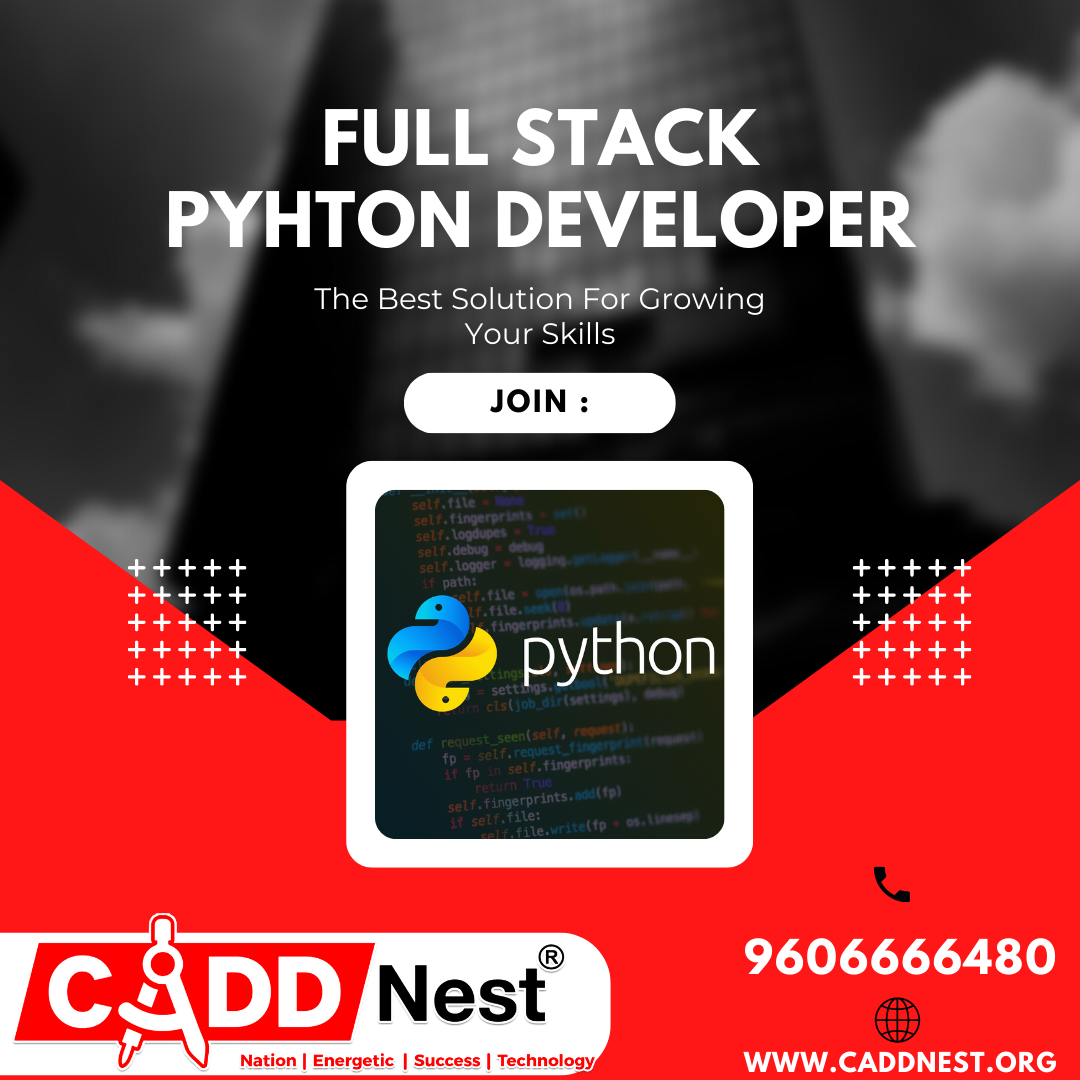Python Full Stack Course Classes Near Nehru Nagar

contact:+097404 44363
A Python Full Stack course typically covers a wide range of topics related to both front-end and back-end web development using the Python programming language. Here's an overview of what you might expect to learn in such a course:
-
Python Programming Basics: The course would likely start with an introduction to Python programming, covering fundamental concepts such as data types, variables, control structures (loops and conditionals), functions, and object-oriented programming (OOP) principles.
-
HTML, CSS, and JavaScript: As a full-stack developer, you need to understand the basics of web development. You'll learn HTML for creating the structure of web pages, CSS for styling and layout, and JavaScript for adding interactivity and dynamic behavior to web pages.
-
Python Web Frameworks: The course may cover popular Python web frameworks such as Django and Flask. You'll learn how to use these frameworks to build powerful and scalable web applications. Topics may include routing, views, templates, models, forms, authentication, and authorization.
-
Database Management: You'll learn about database management systems (DBMS) and how to interact with databases using Python. This may include SQL (Structured Query Language) for relational databases like PostgreSQL, SQLite, or MySQL, as well as NoSQL databases like MongoDB.
-
Version Control with Git: Version control is essential for collaborative software development. You'll learn how to use Git, a distributed version control system, for tracking changes to your codebase, collaborating with other developers, and managing project repositories on platforms like GitHub or GitLab.
-
API Development: You'll learn how to build RESTful APIs (Application Programming Interfaces) using Python and frameworks like Django REST Framework or Flask-RESTful. This involves creating endpoints, handling HTTP requests and responses, authentication, serialization, and data validation.
-
Front-End Frameworks and Libraries: You may learn about popular front-end frameworks and libraries such as React, Angular, or Vue.js. These frameworks allow you to build interactive and responsive user interfaces for your web applications.
-
Deployment and DevOps: You'll learn about deploying web applications to production servers and managing the deployment process. This may involve using platforms like AWS (Amazon Web Services), Heroku, or DigitalOcean. You may also learn about containerization with Docker and container orchestration with Kubernetes.
-
Testing and Debugging: You'll learn about software testing techniques and best practices for writing testable code. This may include unit testing, integration testing, and end-to-end testing. You'll also learn how to debug and troubleshoot issues in your code.
-
Security Best Practices: Security is a crucial aspect of web development. You'll learn about common security vulnerabilities and best practices for securing web applications, including input validation, authentication, authorization, HTTPS, and protecting against common attacks like SQL injection and cross-site scripting (XSS).
-
Continuous Integration and Continuous Deployment (CI/CD): You'll learn about CI/CD pipelines and tools for automating the build, test, and deployment processes. This may involve using tools like Jenkins, Travis CI, or GitLab CI/CD.
-
Project Work and Portfolio Building: Throughout the course, you'll work on hands-on projects and assignments to apply what you've learned and build a portfolio of real-world web applications. This will demonstrate your skills to potential employers and clients.
When choosing a Python Full Stack course, consider factors such as the course curriculum, instructor expertise, teaching methodology, hands-on projects, industry relevance, student reviews, and job placement assistance. It's also essential to practice regularly, work on personal projects, and stay updated with the latest trends and technologies in full-stack web development.
-(2).png)